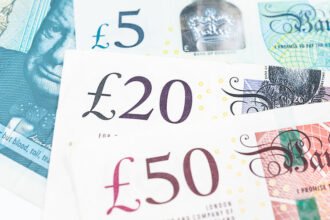- The Pound Sterling surrenders intraday recovery against the US Dollar despite US economic uncertainty.
- Investors have become increasingly confident that the US economy could enter a recession.
- UK PM Starmer vows to shelter domestic firms from potential global trade war.
The Pound Sterling (GBP) exhibits highly volatile action against its peers at the start of the week. The British currency is impacted by Trump’s tariffs-driven uncertainty that is expected to batter the United Kingdom’s (UK) economy strongly.
UK firms are expected to face significant competition in the global market as business owners from nations slapped with significantly higher tariffs by the US would look for other markets for their products. Such a scenario would be unfavorable for a country that is already struggling to cope with tight financial conditions.
The Bank of England (BoE) is maintaining a strict “gradual and cautious” stance on further monetary policy easing as inflationary pressures remain significantly far from the desired rate of 2%. The odds of UK inflation easing in the near term are at least as BoE officials have already warned that price pressures could accelerate before returning to the 2% path due to higher energy prices.
Meanwhile, UK Prime Minister Keir Starmer has vowed to protect domestic firms from the storm of Trump tariffs. “We stand ready to use industrial policy to help shelter British business from the storm,” Starmer said over the weekend, Reuters report. Starmer also indicated that he wants to strengthen alliances and reduce trade barriers.
This week, investors will focus on the monthly Gross Domestic Product (GDP) and the factory data for February, which will be released on Friday.
Daily digest market movers: Pound Sterling declines against US Dollar
- The Pound Sterling gives up its intraday recovery move and falls to near 1.2820 against the US Dollar (USD) during Monday’s European session, the lowest level seen in a month. The GBP/USD pair drops as the US Dollar strives to gain ground, with the US Dollar Index (DXY), which tracks the Greenback’s value against six major currencies, aiming to hold above 103.00.
- The outlook of the US Dollar remains uncertain as financial market participants have become increasingly concerned over the United States (US) economic outlook, with Federal Reserve (Fed) Chair Jerome Powell warning that larger-than-expected tariffs imposed by President Donald Trump on Wednesday could lead to a resurgence in inflation and slower economic growth. “We face a highly uncertain outlook with elevated risks of both higher unemployment and higher inflation,” Powell said in his prepared remarks at the annual conference for the Society for Advancing Business Editing and Writing on Friday.
- When asked about the impact of Trump’s tariffs on the monetary policy outlook, Powell continued with the “wait and see” approach and said, “The Fed is well-positioned to wait for greater clarity before considering policy adjustments.”
- Meanwhile, market experts now see a greater chance that Trump’s sweeping, harsh-than-expected tariffs on US trading partners could push the US economy into a recession. Investment banking firms Goldman Sachs and JP Morgan have raised the probability of the US entering a recession to 45% and 60%, respectively.
- This week, investors will focus on the US Consumer Price Index (CPI) data for March, which will be released on Thursday. The impact of the US CPI data is expected to be limited in the US Dollar unless there is a dramatic change, as market expectations for the Fed’s monetary policy outlook will likely be driven by tariff-led consumer inflation expectations.
Technical Analysis: Pound Sterling slips below 20-day EMA

The Pound Sterling struggles to recover after sliding to near 1.2820 against the US Dollar on Monday. The GBP/USD pair falls below the 20-day Exponential Moving Average (EMA), around 1.2930, indicating that the near-term trend has become uncertain.
The 14-day Relative Strength Index (RSI) falls below 60.00, indicating that the bullish momentum is over. However, the bullish bias is intact until it holds the 40.00 level.
Looking down, the 50% Fibonacci retracement plotted from late September high to mid-January low near 1.2770 will act as a key support zone for the pair. On the upside, the April 3 high of 1.3207 will be a key resistance zone.
Economic Indicator
Consumer Price Index (YoY)
Inflationary or deflationary tendencies are measured by periodically summing the prices of a basket of representative goods and services and presenting the data as The Consumer Price Index (CPI). CPI data is compiled on a monthly basis and released by the US Department of Labor Statistics. The YoY reading compares the prices of goods in the reference month to the same month a year earlier.The CPI is a key indicator to measure inflation and changes in purchasing trends. Generally speaking, a high reading is seen as bullish for the US Dollar (USD), while a low reading is seen as bearish.





















